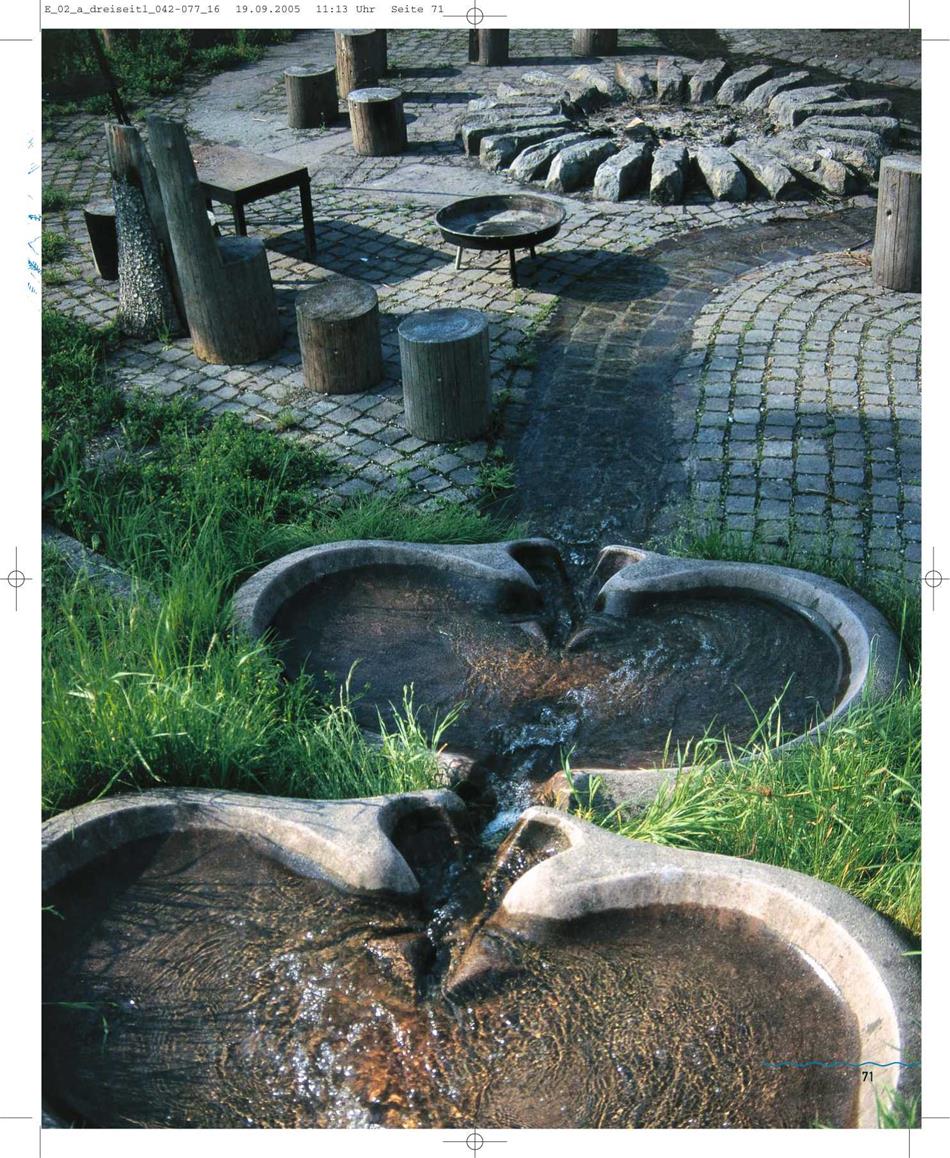|
The magnificent historical Sonnenhausen estate was given a water garden for rainwater management and to purify waste water. It is part of the little park. |
|
There are all sorts of stories and legends about Karl Ludwig Schweisfurth. By profession a business management graduate and master butcher, he took over his father’s sausage business in Herten, built it up into a company with 5,000 employees and sold it to a food concern in 1985. He used the profit to set up the Schweisfurth Foundation, and since then he has run an estate in Glonn, about 40 kilometres south of Munich, where he has realized his dream of alternative agriculture. Schweisfurth always had an affinity with art – he used to share this with his colleagues, and now he shares it with his animals. This story is told about the Hermannsdorfer Land – werkstatten, which are part of his property: he once painted the I-ging sign on the wall of a cowshed, which apparently by chance enticed two cows out of a corner of the shed. They put their heads on one side, then raced out into the fields to fetch their grazing friends. All the cows looked at the painting together until one of their number licked it off. Schweisfurth later had some more durable works of art set up on the site, plain stone columns for the Landwerk – statten, and striking wheels made of willow for the Sonnenhausen estate. The Sonnenhausen estate is next door to the Landwerkstatten, and has established itself as the seminar building for environmental education. The outdoor facilities were redesigned in 1989, largely on the basis of plans by the Dreiseitl studio. In accordance with the aims of the foundation, all waste water is taken to planted purification tanks near the adjacent wood, then on to a stream after it has been cleaned. A large proportion of the rainwater flows into various ponds that determine the aesthetic of the open spaces and are also used to water the vegetables and flowers that are grown. When it rains, the water accumulates in the yard in paved channels leading to the pumped water cycle, which |
|
Rainwater is collected from the roofs of the building and fed into the water cycle via sweeping channels and fords. |
|
feeds a well dating from the twenties. A curved channel runs out of the yard of the living section, swings to the right through flowform pools, circles a paved fireplace and finally ends up in a seminatural pond. Thus seminar themes on sustainable methods can be tested outside the conference rooms against the example of water management. |
|
Land art objects as viewpoints above the water garden |
|
Water running round a fireplace – elemental contrasts in the closest possible proximity |
|
Pulsating water movements appear in the flowforms, aerating and activating the water that flows through them. |
![]()
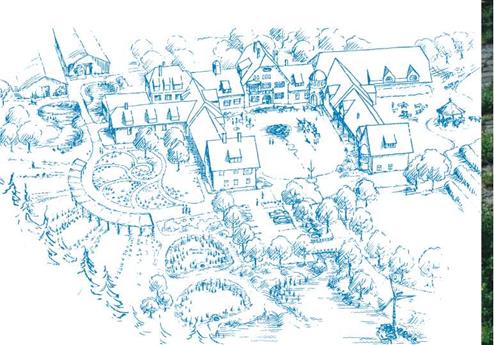
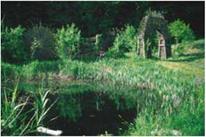
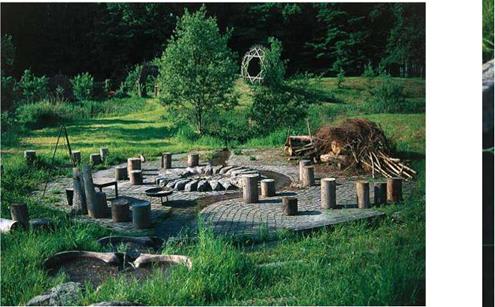
![]()
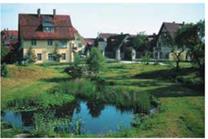
|
|
|

